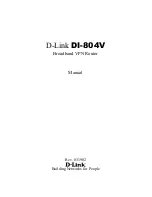
H13SSW User's Manual
44
Chapter 3
Troubleshooting
3.1 Troubleshooting Procedures
Use the following procedures to troubleshoot your system. If you have followed all of the
procedures below and still need assistance, refer to the ‘Technical Support Procedures’ and/
or ‘Returning Merchandise for Service’ section(s) in this chapter. Always disconnect the AC
power cord before adding, changing or installing any non hot-swap hardware components.
Before Power On
1. Check that the BMC Heartbeat (LED1) is blinking before the motherboard is turned on.
2. Check that the Onboard Power OK (LED7) on the motherboard is on.
3. Make sure that the power connector is connected to your power supply.
4. Make sure that no short circuits exist between the motherboard and chassis.
5. Disconnect all cables from the motherboard, including those for the keyboard and
mouse.
6. Remove all add-on cards.
7.
Install a CPU, a heatsink*, and at least one DIMM on the motherboard. Check all jumper
settings properly. *Make sure that the heatsink is fully seated.
8. Use the correct type of onboard CMOS battery (CR2032) as recommended by the
manufacturer. To avoid possible explosion, do not install the CMOS battery upside down.
No Power
1. Make sure that no short circuits exist between the motherboard and the chassis.
2.
Verify that all jumpers are set to their default positions.
3. Check that the 115V/230V switch on the power supply is properly set.
4.
Turn the power switch on and off to test the system
5. The CMOS battery on your motherboard may be old. Check to verify that it still supplies
approximately 3VDC. If it does not, replace it with a new one.
















































